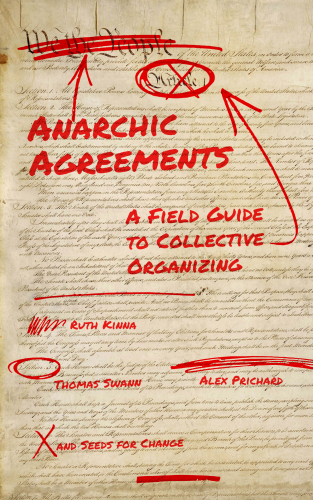brainworm reviewed Anarchic Agreements by Ruth Kinna
Practical pamphlet for constitutionalizing
4 stars
This is a short, easily understandable guide aimed at horizontalist groups. Prefigurative, not prescriptive, with lot's of relatable examples, and at the end a large appendix of constitutional documents historical and modern to gain inspiration from.
I am glad this exists! It makes the case for building lasting structures, institutions, and that governance (via constitution) is a strong support to that.
There are times where I wish it was a bit more prescriptive, and had a more positive light on leadership and specializing which I now believe to be not only inevitable, but actively desirable.
Overall, a lot of good common sense for organizing, and a great entry for people who are newer to governance.
This is a short, easily understandable guide aimed at horizontalist groups. Prefigurative, not prescriptive, with lot's of relatable examples, and at the end a large appendix of constitutional documents historical and modern to gain inspiration from.
I am glad this exists! It makes the case for building lasting structures, institutions, and that governance (via constitution) is a strong support to that.
There are times where I wish it was a bit more prescriptive, and had a more positive light on leadership and specializing which I now believe to be not only inevitable, but actively desirable.
Overall, a lot of good common sense for organizing, and a great entry for people who are newer to governance.



